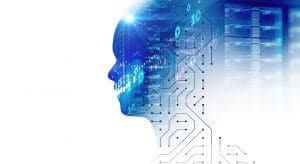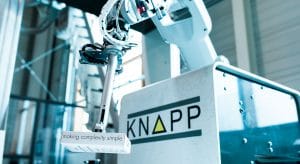Machine learning – future technologies at KNAPP
Today, the term machine learning is everywhere. It’s the same with artificial intelligence, neural networks, algorithms, big data, deep learning – catchwords that simply cannot be avoided. But what exactly lies behind these future technologies and concepts? Is it really possible to teach machines to learn? What advantages does it offer– and where does KNAPP come into play? Let’s take a closer look.

Machine learning in simple terms
Machine learning is an area within artificial intelligence where IT systems are trained to recognize patterns based on existing data and algorithms, and to develop corresponding solutions. This means that artificial knowledge is generated from experience. Human assistance, however, is still required; the person must provide the computer with data as well as with the necessary algorithms. The rules of analysis used are critical to the process – based on these rules, the system recognizes specific patterns in the data stock and expands the machine’s neural network. The system is provided with sufficient data and rules and is allowed to learn "self-sufficiently" based on this information.
Sounds complex? Yes, machine learning is complex, but it can be quite easily explained – surprisingly enough – using puppies and bagels. In the following video, Johannes Bannhofer, Software Specialist in machine learning at KNAPP, explains what cute animals and a popular snack have to do the technology of the future.

Machine learning at KNAPP – Robotics and Machine Learning department
As the video clearly demonstrates, machine learning at KNAPP has long since been more than just a buzzword. We like to keep a finger on the pulse and have been working intensively with these technologies for some time now. In the Robotics and Machine Learning department, specifically established for this purpose, specialists join forces to work on artificial intelligence for KNAPP solutions, most importantly for the Pick-it-Easy Robot.
For the fully-automatic picking robots, machine learning is used to define the rules for robot speed as well as article identification and ideal grip point. Using appropriate algorithms, the Pick-it-Easy Robot knows whether it is dealing with a cubical or a cylindrical article, for example. It then decides which of the available grippers is the best for the job and determines the ideal grip point and the right speed to pick the article.

Cooperation with international research institutes
Our experts in machine learning work with international research institutes and companies in Silicon Valley to further develop the robustness and artificial intelligence of the Pick-it-Easy Robot. The cooperation and many years of experience as logistics partner ensure that our solutions will be even more intelligently designed in the future.
Johannes Bannhofer is of the same opinion: “Our strength is our multi-faceted know-how in logistics. This knowledge, in combination with the latest approaches in machine learning, allows us to create exciting solutions that are both flexible and robust. The goal is to design our solutions with their evolution in mind, so that they can keep developing with the requirements of our customers.”
Pick-it-Easy Robot
- Fully-automatic picking solution for logistics applications
- Can be used combined with automated storage systems and manual picking work stations. This results in an ideally coordinated picking system.
- Processes a wide article range thanks to different grippers and a fully-automatic gripper change
- Also suitable for delicate articles
- Functions: Dropping, careful organized placement, separating, merging
- Integrates into existing KNAPP systems
- Robust and low-maintenance
- Picking performance: Up to 1,200 items per hour
- Named as best product at the LogiMAT 2017
Further reading recommendations

Thanks to its intelligent error handling and consistently high performance, the Pick-it-Easy Robot perfectly reflects KNAPP’s zero defect philosophy.

The world of logistics is changing. Automation and robotics are on the rise and already feature in countless distribution and production centres around the world.

Robots and artificial intelligence have long inspired people’s imagination. For logistics, robots offer countless possibilities.
Additional Information
More information:
